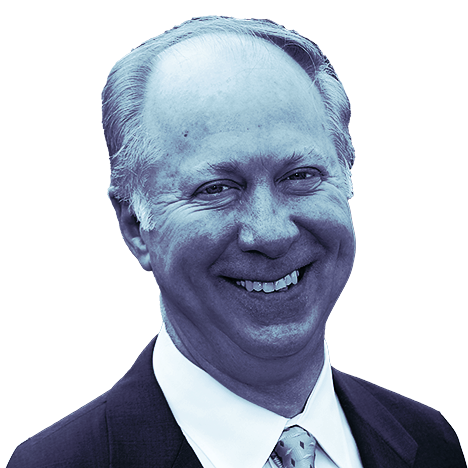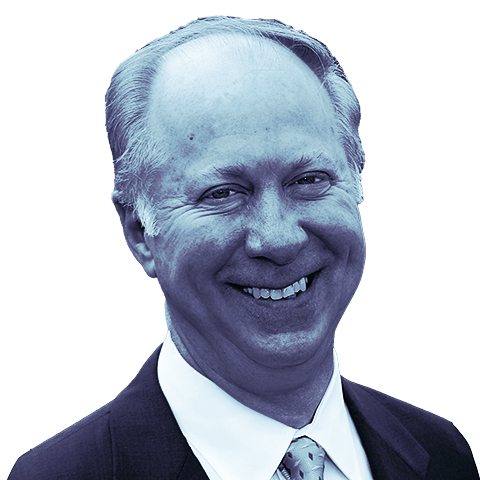
| Our best ideas, quick and curated | JUNE 17, 2022
|
| This week, we look at all the steps that companies should take to get value from the cloud. Plus, how leaders can buck a herd mentality, and David Gergen, a longtime presidential adviser and political analyst, on how the Baby Boomers have to step back and let younger leaders lead. |
|
|
|
| Cloud aspirations versus cloud value. The potential of the cloud is pretty much indisputable today, and the vast majority of companies around the world use cloud technology. But many (even those already on the cloud) may be stuck in legacy thinking about on-site computing models, with calcified strategies based on either owning or consuming IT instead of encompassing various cloud-specific financial approaches and models. Companies are making a number of cloud economics mistakes, and McKinsey has compiled the six most common and detrimental. As cloud consumption becomes more core to business than ever, companies that manage their cloud economics effectively will find true cloud value—rather than simply having cloud aspirations. |
| Technology talent shortage. More than $1 trillion—that’s right, trillion—of new value is at stake in the cloud. But companies aren’t seizing those benefits, because they don’t have the right tech talent in place. Nearly all—95 percent—of respondents to a recent survey told McKinsey that they lack cloud talent and capabilities, and it’s one of their biggest roadblocks in getting value from the cloud. Between 2017 and 2020, investments in cloud transformations tripled, but many companies haven’t matched that pace on the talent front. The companies that have report deep and positive impact. To help more companies build a high-performing cloud talent bench and operating model, McKinsey has identified a list of practical actions to take. |
| Bring in your board. Increased innovation speed? Better IT efficiency? More business value thanks to technology? Look to the cloud, as countless companies have. But many haven’t captured its benefits at scale. It’s time to brief your board on the benefits of cloud tech; a clear view of its impact can help boards effectively support your cloud transformation. McKinsey’s series of charts can help boards shape their organizations’ cloud strategy. |
| Get foundational. Too often, IT departments focus on short-term gains—migrating a set of applications to the cloud as fast as they can—without first building the right cloud foundations. Such migrations can flounder, resulting in significant delays and even financial repercussions. Companies that lay a solid foundation will see notable rewards in speed and value, and McKinsey has outlined the ten most crucial actions for building it. |
| — Justine Jablonska |
|
|

|
| OFF THE CHARTS |
| I’ll take two scoops of ethics, please |
| Ice cream and yogurt shopping preferences are constantly swirling. But while flavor is always king, ingredients, packaging, distribution, and ethical promises are increasingly important to consumers. According to McKinsey research, more than seven in ten shoppers are willing to pay more for products from producers that pay workers fairly, operate locally, and emit less carbon.
|
|
|
|
|

|
| MORE ON MCKINSEY.COM |
| When the crowd isn’t necessarily wise | The latest edition of Bias Busters explores how leaders can recognize herd mentality when it happens—and utilize the contrarian view to help break the spell. |
| The future of African oil and gas | With momentum building for sustainability, Africa’s oil- and gas-producing nations have an opportunity to embark on an inclusive energy transition and chart a course toward a sustainable future. |
| Five myths about retail media | Retail media networks are transforming the advertising landscape and boosting top retailers’ bottom lines. McKinsey’s latest survey helps debunk five mistaken beliefs about them. |
|
|
|
|
|
| THREE QUESTIONS FOR |
| David Gergen |
| David Gergen, presidential adviser and founding director of the Harvard Kennedy School’s Center for Public Leadership, thinks the US needs fresh thinking to solve intractable problems. In his new book, Hearts Touched with Fire: How Great Leaders Are Made, he urges Baby Boomers to pass the baton to younger leaders. This is an edited excerpt of his Author Talks interview. |
|
|
|
|
| What did the Baby Boom generation get wrong? |
| As former US senator Daniel Patrick Moynihan used to say, we borrowed a trillion dollars and had a great party. And yet, what have we gotten for all the efforts of the Baby Boom population? |
| We’re in a situation where that cohort is leaving behind a country in real trouble. The World War II generation, by contrast, left behind an America that was the strongest country since the days of Ancient Rome militarily, economically, and culturally. We were in great shape, but we’ve slipped from that, and we ought to recognize it. We ought to call it out for what it is, and we need to prepare the leaders of the future—people who are going to return this country to a better place. |
| You say leadership requires a hard head and a soft heart. Why? |
| Both things are important. You do need someone who is tough. I found with presidents, for example, if you’re in international negotiations with an adversary, you want to be very respectful. You want to make some progress, but you also want that adversary to know that if you don’t make progress, or if they try to screw you over in one way or another, you have a club in the closet. Keep that club in the closet; use it only as a last resort. But you better have a club because people will have a lot more respect for you and will listen to you when you do that. |
| It also increasingly happens that, to be effective, you need a strong sense of empathy toward the people you’re dealing with. You need to see the world as they see it. An important element of leadership today is to understand the little guy, to understand the women who’ve been discriminated against, to understand the people of color who’ve been discriminated against, and to join them in trying to make their lives better. True leaders today have that combination of hardheadedness and a soft heart. |
| What gives you hope about the future of America? |
| What I have found in the younger generations is a grit and an idealism that I think are rare. There are a lot of young people who remind me of World War II veterans, especially those people coming back from Afghanistan and Iraq in the US military. They learned hard discipline. |
| I’ve worked with the veterans coming back, and I’ve spent a lot of time trying to help them get elected on both sides of the aisle. I find they’re very appealing—people who can change the world. One of the big issues is that there are just not enough of them, which is one of the reasons we ought to be looking at the creation of a new national service program. We could encourage every young person between the ages of 18 and 24 to spend at least a year giving back to the community by working in a soup kitchen, working for a hospital, working in a place of worship, or working at any other place where you can give back. This, I think, is one of the great avenues forward. |
| By the way, if you go to college and then do this, the idea behind national service is that for every year you give to your community, you could get one year off on your college debt. These debts weigh people down. If you have a lot of debt, it’s really, really hard to be in service to the country, but if we help to solve that problem, people can do wonders. |
| — Edited by Barbara Tierney |
|
|
|
| BACKTALK |
| Have feedback or other ideas? We’d love to hear from you. |
|
 |
|
|
Did you enjoy this newsletter? Forward it to colleagues and friends so they can subscribe too.
Was this issue forwarded to you? Sign up for it and sample our 40+ other free email subscriptions here.
|
|
|
This email contains information about McKinsey’s research, insights, services, or events. By opening our emails or clicking on links, you agree to our use of cookies and web tracking technology. For more information on how we use and protect your information, please review our privacy policy.
|
|
You received this email because you subscribed to The Shortlist newsletter.
|
|
|
|
Copyright © 2022 | McKinsey & Company, 3 World Trade Center, 175 Greenwich Street, New York, NY 10007
|
|
|
|






